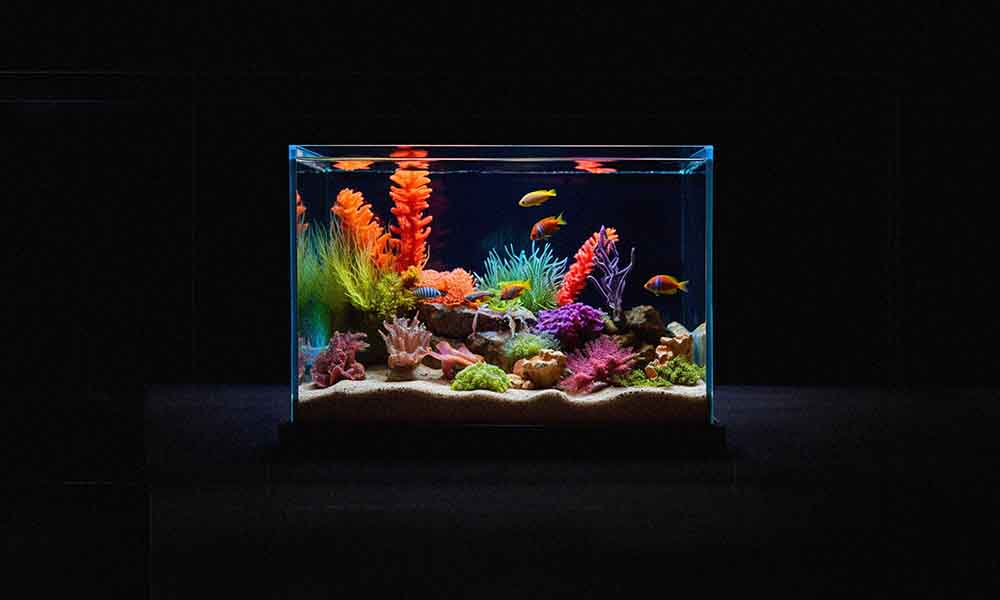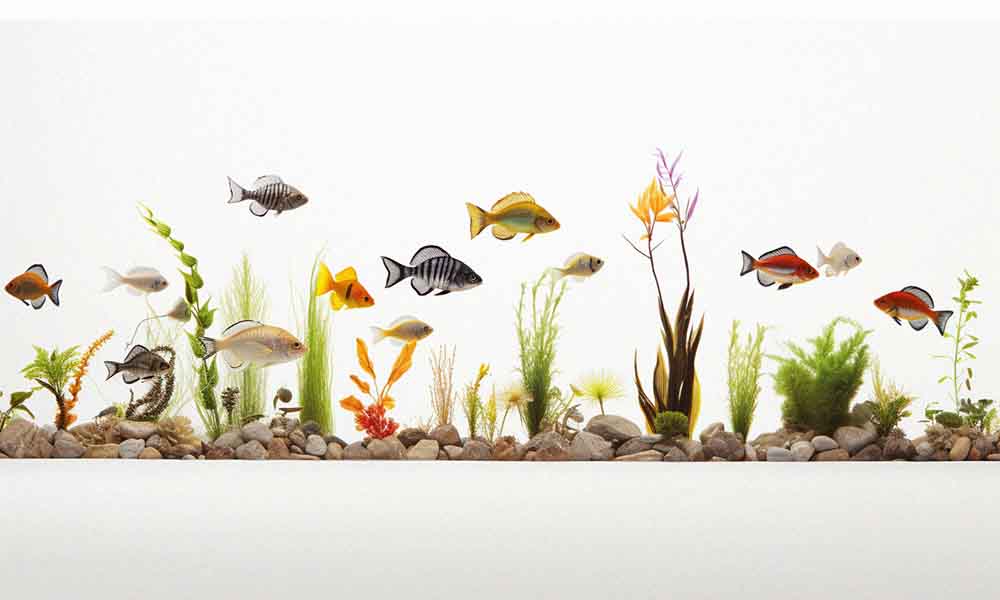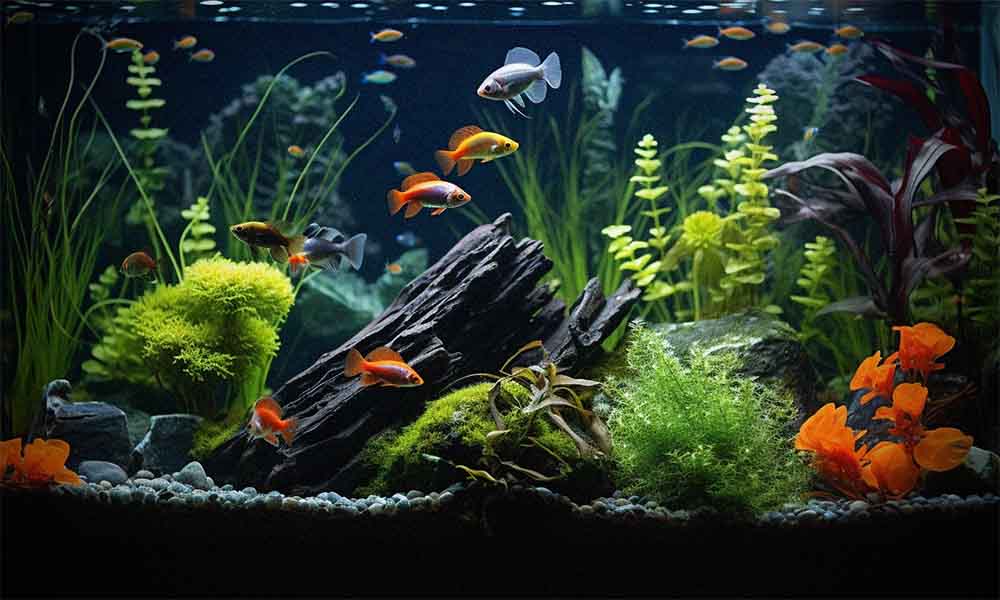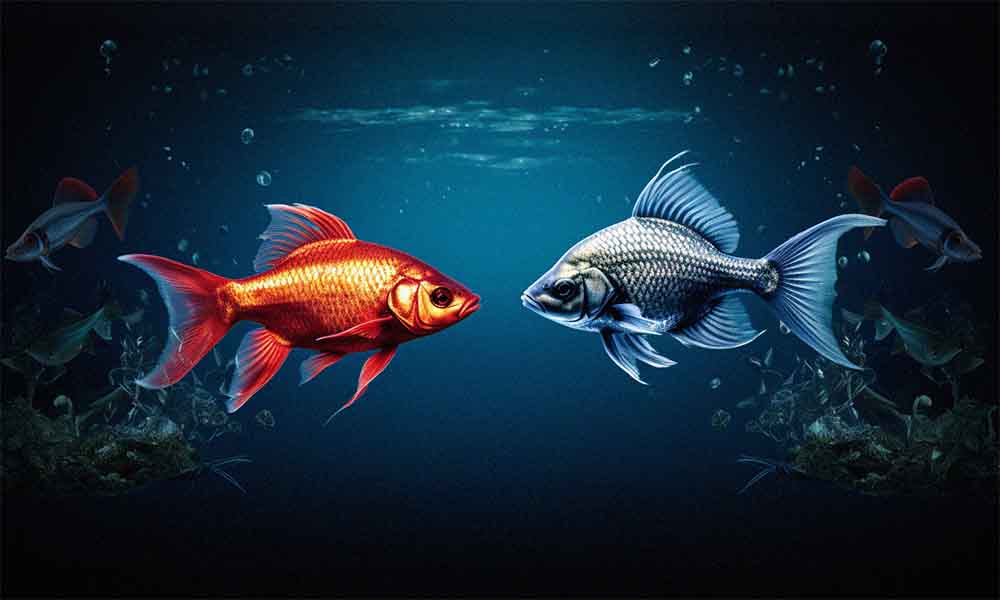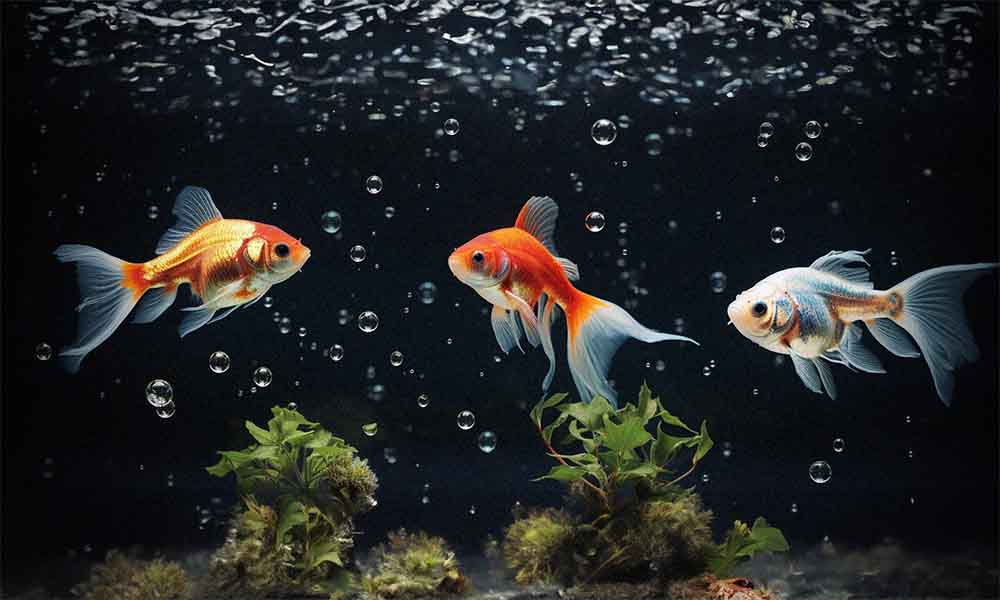A nano aquarium is a small-scale aquarium designed for keeping a limited number of fish and plants. Usually, the capacity of a nano aquarium is around 5 to 10 gallons (18 to 37 liters) or less.
These miniature aquariums are becoming increasingly popular among hobbyists due to their compact size and versatility. Nano aquariums often cater to small fish species, shrimp, or other aquatic creatures that don’t require a large space to thrive.
They are ideal for those with limited space, such as apartment dwellers or those looking to set up a visually appealing aquarium on a desk or countertop.
Note that being small doesn’t mean that you can leave your aquarium without maintenance!
Actually, due to their smaller volume, nano aquariums usually demand more frequent water changes. You must also pay attention to keeping water clean as the water quality can fluctuate more quickly.
However, advancements in equipment and technology have made it easier to maintain stable environments in these compact setups.
So let’s explore how you can create your own miniature aquatic paradise!
Key Takeaways
- Nano aquariums offer various types like freshwater, saltwater, and brackish tanks, allowing for different species and environments.
- Setting up a nano aquarium involves installing necessary equipment, filling the tank with dechlorinated water, adding plants and decorations, and cycling the tank to establish a beneficial bacteria ecosystem.
- When choosing fish for a nano aquarium, it is essential to consider their breeding habits, compatibility with tank mates, and specific needs while being mindful of tank capacity to avoid overcrowding.
- To keep the water clean in a nano aquarium, you need to monitor pH levels, regularly test the water, clean the tank, use a filter to remove solid waste, and perform regular water changes.
Types of Nano Aquariums
The most popular type of nano aquarium is the freshwater aquarium. These tanks can range in size from 1 to 20 gallons and offer various options for substrate selection.
Another type of nano aquarium is the saltwater tank. These tanks require more maintenance than freshwater tanks but offer a unique and vibrant experience.
Saltwater tanks feature exotic species and vibrant colors not typically found in standard pet stores.
Lastly, there’s the brackish tank, a combination of fresh and saltwater environments. Brackish tanks present their own unique set of challenges regarding setup and maintenance.
Setting Up a Nano Aquarium
Setting up a nano tank is surprisingly simple with all the ready-made kits you can get nowadays.
It typically involves:
- Installing the necessary equipment, such as filtration, lighting, and heating systems.
- Filling the tank with dechlorinated water.
- Adding plants and decorations.
- Cycling the tank allows beneficial bacteria to establish its ecosystem.
Choosing the Right Fish
When selecting fish, consider their breeding habits and compatibility with potential tank mates.
Variety is key for a successful nano aquarium; however, some species are better suited to small tanks than others. Choose relatively small species that don’t require too much space or oxygen.
It’s essential to research each type of fish you want in your aquarium so you can understand their needs and create a suitable habitat for them.
You’ll also need to know how many fish your tank can handle without overcrowding it or upsetting the delicate balance of nature within your microcosm.
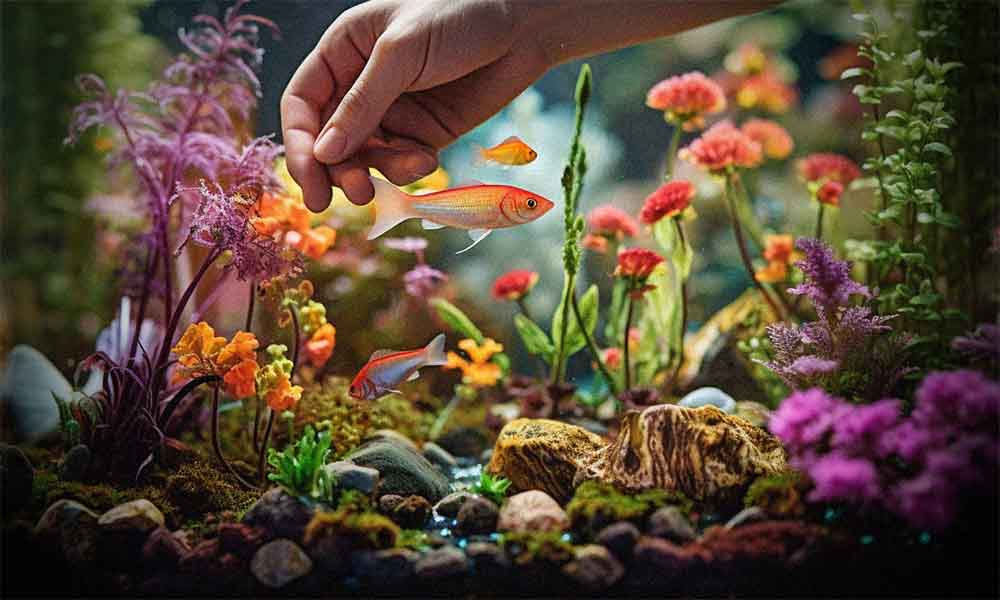
Keeping the Water Clean
To keep your nano aquarium healthy, you must monitor pH levels and regularly test the water. This helps determine if any quality changes could harm fish and other inhabitants.
You should also clean the tank weekly to remove debris, algae, or other contaminants. A filter is essential for removing solid waste from the tank and can help keep the water clear.
Finally, regular water changes are necessary to replace lost minerals from fish waste or chemical treatments.
Adding Aquatic Plants
When selecting the right plants for your nano aquarium, consider their size, light requirements, and compatibility with fish.
Here are 4 tips for creating a successful tank setup:
- Choose low-light species like Anubias or Java Ferns that don’t require much maintenance.
- Make sure there is enough space between the plants and other decorations in the tank so they have room to grow.
- Select a mix of foreground, midground, and background plants to create an eye-catching layout.
- Add fast-growing stem plants like Rotala Rotundifolia or Hornwort to help balance nutrients in the water column while providing cover for smaller fish species.
Decorating Your Tank
Decorating your tank with rocks, driftwood, and other decorations can help create an exciting environment for your fish to explore.
Selecting colors that will complement your aquarium’s design is essential when choosing decorations. Consider adding a few brightly-colored items like coral or plants to add contrast and depth.
When selecting pieces, make sure they’re manageable for your size of aquarium. Otherwise, you may end up crowding out your fish.
Lastly, be sure to give them plenty of places to hide. Small caves or crevasses are great spots for hiding away.
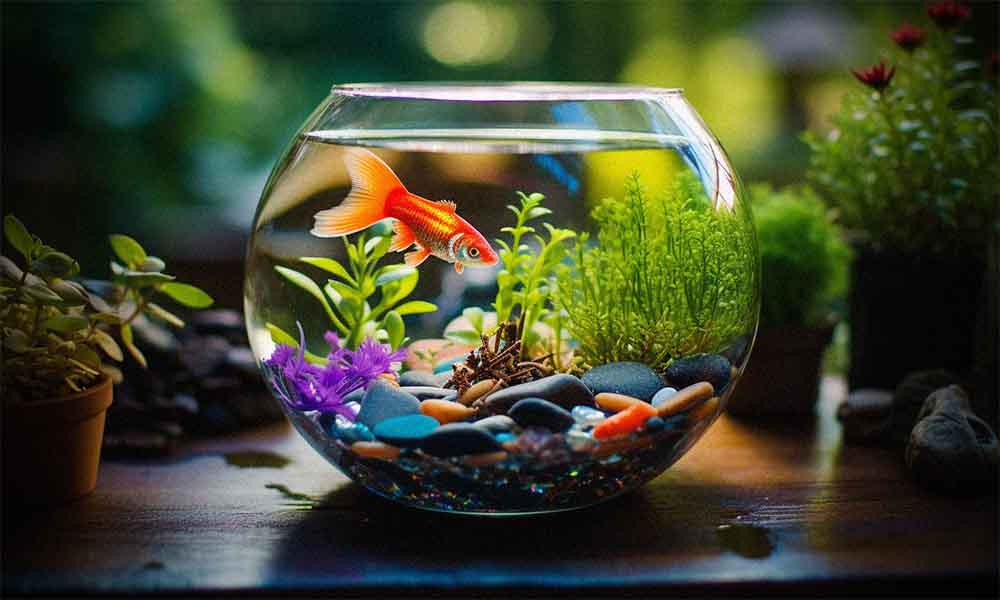
Frequently Asked Questions
How much does it cost to set up a nano aquarium?
Setting up a nano aquarium can cost anywhere from $50-$200, depending on tank size and installation costs. It’s an affordable way to bring beauty into your home.
How often should I change the water in my nano aquarium?
I change the water in my tank every two weeks. Regular water changes keep the water quality high and maintain a healthy tank. It’s important to remember that even small tanks need regular attention.
Are there any special considerations when caring for a nano aquarium?
There isn’t much water, so when things go wrong, it can escalate quickly. You have to stay on top of your water changes. If you slack off, you will potentially get harmful ammonia spikes, etc.
You should monitor the water level, clean it regularly, and make sure the heater works correctly.
Conclusion
Nano fish tanks are an intriguing choice for those seeking a budget-friendly means to keep fish. With their compact size, these tanks are convenient to store and come with diverse advantages that make them a worthwhile investment.
But as they are not totally carefree, ensure you know what you are doing before getting a nano tank.

